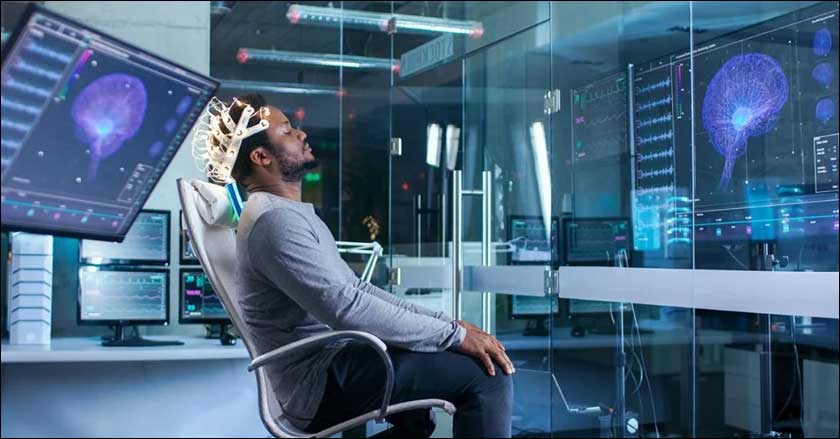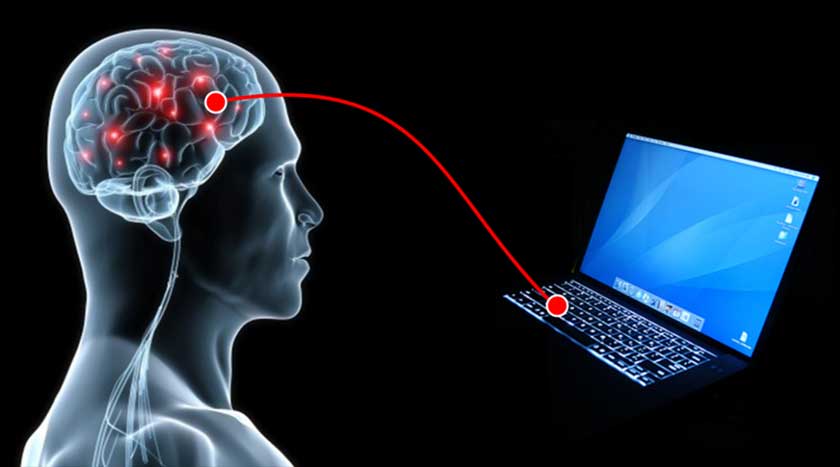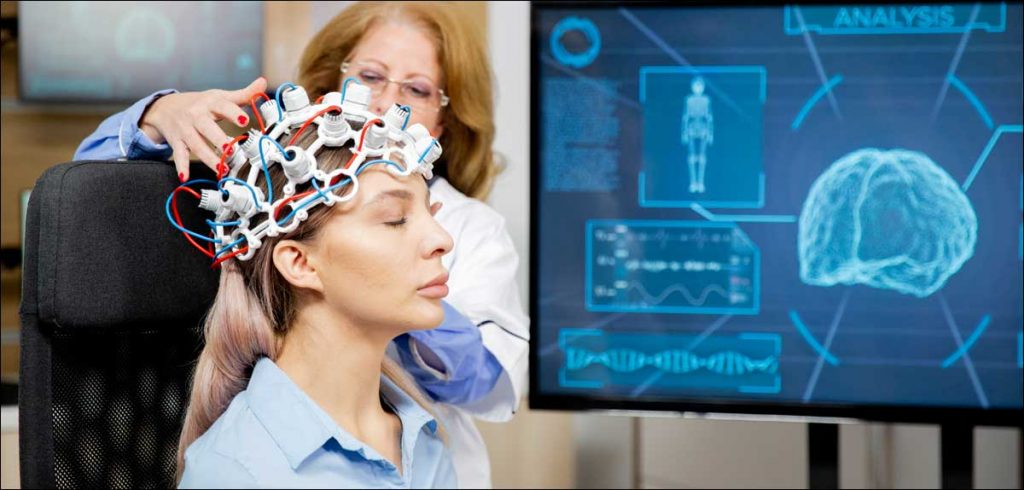It is now all gear change; the future of BCI is almost as organic as slipping on your dream pair of sunglasses.
You are right in front of your desktop, and you want to launch your favourite app. But instead of searching for a mouse or keyboard, you think about it, and the app opens. Is it something that happens only in superhero films, don’t you think? Alright, wake up, because the present isn’t an imagination anymore; it’s actually your future staring right back at you. Gone are the boring technologies of ancient times; Brain-Computer Interfaces (BCIs), or BMI, have just entered the scene and will unite technology and humans like never before.
No, they’re not just gadgets. They are the brazen link between the human mind and the digital dimension. BCIs represent the marriage of neuroscience and computer science, allowing direct communication between the brain and external devices, granting us direct access to the power of our thoughts. Imagine having full control over your smartphone or computer through your mind alone, or transferring your mood to a person in a different location. These visions aren’t just mere daydreams, but realities that are anticipated and that are being made concrete by the recent developments in BCI technology that we’re about to dive into.
Diving into the Channels of Brain-Computer Interfaces
The journey of BCIs on a path of neuroscience and technology is an amazing, chronological story of their success. The story of BCIs, from their beginning to the latest innovative developments, provides us with evidence that the human race, with its endless passions, and the connection of the mind and machines are always within reach. Dating back to the last century, however, the background of some of those ideas is now considered the precursors of the modern BCI landscape. Early sciences in electroencephalography (EEG) brought about the development of EEG-based interfaces, through which neural signals could be translated for real-world applications.
From here, neural implants became the latest revolutionary technique, allowing for straight-forward brain-to-device communication. Over the years, via a sequence of milestones, BICs, including science fiction, crossed over to reality. The advent of highly accurate and reliable signal processing algorithms was made possible due to the advancements in BCI systems, which consequently made it easier to interpret neural activity. Besides this, the progress of hardware technology allows the biosensors to be in smaller dimensions, which helps to make the BCIs more compact and easy to use.

Today, modern BCI systems are only possible due to the huge breakthroughs followed by the sustained development efforts of a whole generation of scientists. So goodbye to the heavy prototypes of the previous years, with the hi-tech gadgets that can easily be worn on your body, melting subtly into the regular lifestyle. For example, companies like Neuralink, created by Elon Musk, are developing BCI, and they want to bring it to market for the treatment of neurological disorders and an increase in cognitive abilities.
This evolutionary pattern of BCIs keeps up with the incessant surge of technology, which is driven by the technological breakthroughs of exponential computing and data analysis that push the limits of neurotechnology. Amidst the technological marvels, the underlying goal remains unchanged: ultimately, to open up the human brain to its fullest and allow people to live a more full and interrelated life.
The fact that Satya Nadella, the CEO of Microsoft, has accurately described these processes is also self-evident: “The BCI evolution is contrasted with a phase where technology and science merge, creating a glimpse into a future where the line between the human mind and the machine becomes blurred.”
Current applications of BCIs
The ubiquitous influence of BCIs can be perceived across many domains, including healthcare, entertainment, and human-machine connection, evoking additional excitement about the future of human-machine interaction. By surveying the BCI’s present landscape, the power of their transformative changes becomes evident not only to tech enthusiasts but to anyone interested in the developments transforming our world as well.
In the medical domain, BCI technology is carried as the light of hope, which is the roadmap for people with disabilities to regain their autonomy and mobility. “Besides artificial intelligence, BCIs have the ability to shake up rehab, helping people overcome physical constraints and gain new ones,” said doctor Micheal J, Young, a neuroscientist at Harvard Medical School. With the help of new BCIs, motor function restoration is possible for these patients, and they can enjoy a feeling of independence and self-respect.
Moreover, BCIs serve as lifelines for individuals battling conditions like locked-in syndrome, offering a conduit for communication and connection. “The fact that we are able to use brain signals for encoding commands that are executive-led makes a huge difference to patients who have severe communication impairments,” said Dr. Richard A. Andersen, a renowned neuroengineering researcher at Caltech. By converting the power of thoughts into signals, they overcome limitations in communication, which is crucial for patients trying to express thoughts, desires, and emotions that once stayed deeply locked in their minds.

Not restricting themselves to healthcare, BCI is changing the contours of gaming and entertainment as they move into the virtual and augmented world of experiences. “Virtual reality gear has completely revolutionised gaming, providing ultra-realistic gameplay,” says gaming industry veterans. From manipulating your characters or yourself with just a thought to diving into a virtual world with the depth of your imagination, BCIs share and transcend the border between real and unreal, which attracts audiences from all around the globe.
In addition, the BCIs have high expectations for improving brain activity by providing tools to sharpen memory, increase learning speed, and boost the intellect of the brain. “This idea is supported by the fact that by using the neuroscientific findings, the BCI can grow people’s cognitive skills, thereby enabling them to have opportunities for increased productivity and creativity,” said Dr. Gregor Wolbringl, who is a cognitive psychologist at University of Calgary. Through targeted interventions, BCI gives people the ability to maximise their mental performance, leading to increased productivity and personal development.
Challenges and limitations
Although BCIs offer tremendous advantages, the way forward is not easy, and some barriers remain. Technical problems, like signal processing and hardware limitations, are formidable obstacles that the technical community has to face in order to accomplish seamless integration between the human brain and computers. While dealing with these situations, ethics remain a predominant concern. Being at the forefront of innovation, the CEO of Amazon, Jeff Bezos states that “we need to recognise the ethics of BCI technology and make sure that it serves the common good.”
“The technology democratisation” is a must for driving positive change, “Thus, we must deal with the privacy issues arising from implanted chips in BCIs to create an accessible and affordable means for all to empower themselves to reach the next level of their existence.” However, the barriers of accessibility and affordability should not be underestimated either. Even though BCIs are seen as a tool that can increase human capacities, they need to be for everyone, not just the high socioeconomic class.
Despite the fact that BCI technology offers huge possibilities, several difficulties and ethical concerns make it necessary to solve them. Technical difficulties involve the enhancement of the precision, speed, and dependability of BCIs and the development of more advanced and usable gears. As Dr. Eric C. Leuthardt, a neuroscientist, explains, “Despite the higher resolution they bring, invasive BCIs come with a set of risks associated with complicated surgeries and possible damage to brain tissue.”
Further, “the necessity to secure private ideas, plans, and brain data from unpermitted viewing is accorded to Dr. Anita S Jwa by the phrase,” she argues. Besides that, the ethical implications in the fields of informed consent, coercion, and fairness with respect to the common attributes of the BCIs must be critically considered. For example, consider a scenario where a BCI is used to control a prosthetic limb. Without proper privacy measures, “unauthorised access to the BCI could lead to manipulation of the prosthetic limb,” posing risks to the user’s safety and autonomy.

Overcoming these difficulties requires the joint efforts of all the stakeholders, such as researchers, policymakers, and industry leaders. In the same way, we have to critically assess the technical, ethical, and accessibility issues in BCI. We may then be able to capture the potential of these BCIs and ultimately improve human lives.
Future trends and final predictions
In this instance, just imagine that we are submerging into the future of BCIs, and to my surprise, it feels like living in a movie where sci-fi is a reality! BCIs are going to be able to do all kinds of really advanced things very soon. People are going to think that they are very cool. We are entering an entirely new realm of brainy gadgets that are becoming smaller, sleeker, and oh-so-wearable. It is now all gear change; the future of BCI is almost as organic as slipping on your dream pair of sunglasses.
Mind your heads, because those applications are coming your way. They’re going to amaze you with their mental telepathic abilities. Imagine that your BCI acts as a reliable link to all your smart goods, which include your phone, fridge, and so on. It is like a technology helper that follows you everywhere and is right in your brain! And especially, don’t worry about concentrating or rereading textbooks because brain-computer interfaces are looking to amplify your brain capacity beyond your imagination. So greet the other side of the brain; it will lead you to remarkable memory, improved focus, and perhaps also a blink-of-an-eye kung-fu mastery (okay, maybe not that last one, but you get the idea).
On the other hand, not only are there rainbows and butterflies, but life has its own difficulties. The path we face does not only lead us into a brave new world, but it also causes us to watch closely for potential dangers. Questions about privacy, ethics, and equal opportunity for all, not just the tech elite and those not connected to technology, are at stake.
That’s like what Uncle Ben said: “With great power comes great responsibility,” and the power of BCIs is like nothing you can imagine. So, what’s the bottom line here? BCIs aren’t just gadgets; they’re the keys to a future where the line between mind and machine blurs into oblivion. So, let’s buckle up and embrace this wild ride with open arms and open minds. Together, we can push the boundaries, keep our feet on the ground, and unlock a world of possibilities with BCIs leading the charge.
In case you missed:
- Tiny Tech, Big Impact: Edge AI and TinyML are revolutionising data processing
- Devin AI: Software Engineers’ Next-Gen Assistant
- Tech in the Shadows: The Rise of Ambient Computing and Seamless Integration
- Alteryx’s New AI Assistant: Streamlining Analytical Workflows
- Unleashing the Power of Voice: Exploring Meta Voicebox AI
- What’s new in Azure app service at Build 2024: Key announcements and features
- Forecasting the Future: Generative AI in Software Testing for 2024
- Decoding BlackBox AI: Your Creative Coding Partner
- Blackwell chip: Nvidia engine for breakthrough AI
- The Rise of FinOps and GreenOps









